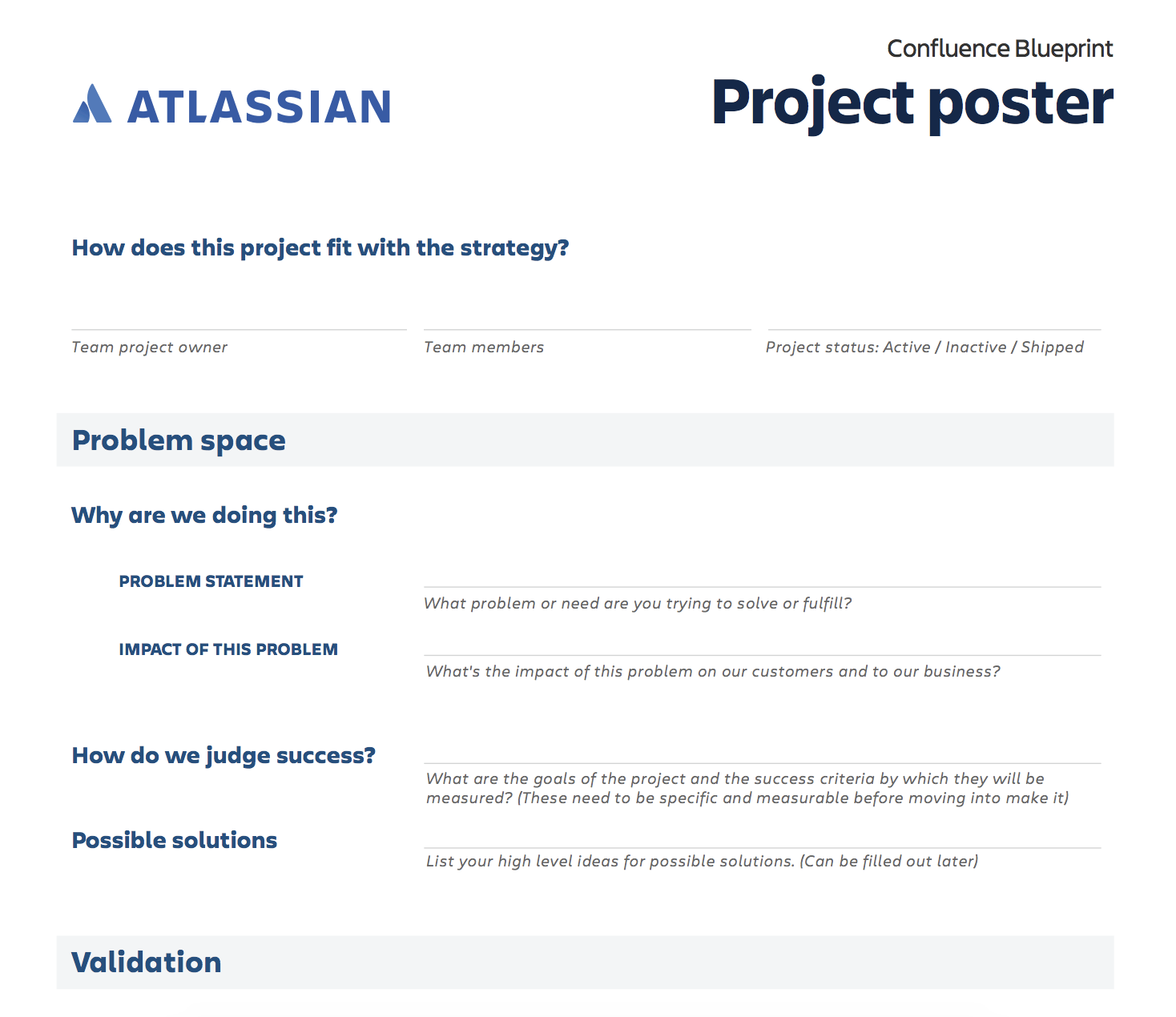So. You have to manage a project, and you’re not a project manager by trade.
I’ve been there. It’s pretty daunting, with all these different frameworks and methodologies to consider… But if you’re like me, you don’t really care about methodology. You just want to deliver your project successfully, and not lose your mind in the process.
Fortunately, I work with people who are really good at leading projects – some are even bonafide project managers! They’ve given me loads of project management tips that non-project managers like us can benefit from.
Embrace your role as the project’s manager
For the duration of the project, you are a director – not a doer. Cranking through tasks instead of keeping the project organized and humming along will only saddle your team with a severe case of “Leadership Deficit Disorder”. I know this first-hand (as I confessed to recently).
If you embrace project management as your new gig for the next few weeks/months, you’ve got a good shot at delivering the project successfully. If you cling to an individual contributor mindset, the project will either spin out of control or grind to a halt. Either way, it’ll be painful for everyone involved and the project will likely fail.
Ok: now that we’ve got the cautionary tale out of the way, let’s get on with the tips.
Make sure everyone on the project team understands they’re on the project team
You can’t manage a project effectively if the people you’ll need help from don’t know you’ll need their help.
First, talk with their managers about what contribution you’ll need and when you anticipate needing it. Draw the connection between your project and the company’s larger goals* so it’s easier for them to buy into the idea. Try to reach an agreement with each manager as to how much of their team’s time you can expect to get and where your project falls on their list of priorities. (You may not like their answer, but at least you’ll know what kind of constraints you’re working with.)
Once things are sorted with managers, touch base with each person on the project team. A quick ping via chat or a desk drive-by is fine. All you need to do at this stage is give them a heads-up so their subconscious can start crunching on it, and they don’t overcommit to other work.
Remember your stakeholders, too. They’re also part of your team! Let them know what your vision for the project is and how you think it’ll affect their world. At Atlassian, a project “poster” or one-pager is our favorite way of communicating this – more on those in a moment.
*Btw, if your project doesn’t have any connection to the company’s larger goals, that’s a sign the project isn’t worthwhile or is ill-timed. Step back and reconsider the outcome you’re trying to achieve, the means through which you’ll achieve it, and when you plan to start.
Get off to a strong start through shared understanding
If you’re working with a cross-functional project team who report to different managers it’s especially important to have a moment where you say “Ok everyone… go!” I’ve lead projects that had that moment, and projects that didn’t – guess which ones went better?
Gather the core team for a formal kick-off
The key is to build a shared understanding of what you’re doing and why with your project team. You can do this with a project kick-off meeting – if you put the right things on the agenda. My favorite exercise is to create an elevator pitch for the project as a group.
The format we use here is simple:
“For [TARGET CUSTOMER TYPE] who want to [NEED / DESIRE], [PROJECT OR FEATURE] is a [THING] that [KEY BENEFIT].”
By the time you’ve got a good pitch, everyone is pretty clear on the project’s value and goals.
Project kick-offs aren’t the right time to go deep into task planning, but building a rough timeline with milestones (again, as a group) helps your team gauge how long they’ll be on the project and which periods will be most intense for them. It’s also a good time to talk about which aspects – cost, scope, etc. – are most and least negotiable (an exercise we call “trade-off sliders“). Agreeing on that at the start lets team members make most of the every-day decisions on their own.
Between a timeline, agreement on trade-offs, and an elevator pitch, your team should be ready to go out and kick butt by the end of the kick-off meeting.
Deflect shoulder-taps with a project poster
To reach that shared understanding with stakeholders, put information about your project in writing and share it around. We use a format called the “project poster”, which is a cousin of the dreaded project briefs I’ve had to use at other companies. I was skeptical at first, but warmed up to the project poster because it prompts me to think through things like what assumptions I’m making about the project, why this will be valuable to customers (whether internal or external), and how we judge success.
It takes a few hours to build out a project poster, but that’s less than the time you’ll otherwise spend fielding one-off questions and cubicle drive-bys.
Download the full project poster template.
“Documents like a project poster and a project kickoff are absolutely essential” says John, our head of marketing operations and an ace project manager if ever there was one. “They establish trust and context across the entire team.”
Download a project poster template to use on your next project, and check out the Atlassian Team Playbook (a free resource for teams of all kinds) for more details on building it out.
Make decisions efficiently
Somewhere along the way, “collaboration” got confused with “full consensus at all times”. That’s just silly. If you require 100% agreement on every decision, your project will stagnate and ultimately fail. You’ll also tear your hair out in frustration.
Big decisions
For group decisions, take a page from the folks who developed Six Sigma and try the DACI framework. Here’s a super-fast explanation:
We’re fans of group decision-making at Atlassian and came up with a nice little template for our teams to use – you can download it here.
Little decisions
Smaller decisions should be both quick and effective if you establish what trade-offs you’re willing to make at the start of the project, as I suggested above. Think beyond the usual cost/time/scope triad. Considerations like security, compliance with regulations, and customer experience factor into decisions, too. And no: you can’t optimize for all of them.
I love the trade-off sliders play from the Atlassian Team Playbook. You can run it as part of a project kick-off, or as a stand-alone exercise.
Track your progress
You probably think of tracking progress as the primary purpose of project management. And you probably loathe it. Yes, it’s administrative overhead. And yes, you still need to do it.
There are lots of ways you can track the project’s progress. A Trello board is a lightweight (and free!) option for simpler projects that just need a visualization of what’s being worked on. Not surprisingly, I manage my projects with Jira. Partly out of habit, partly because sometimes I’m organizing tasks that have a very structured workflow.
What’s most important is that the tracking is digital, online, and accessible to everyone on the team. Don’t use a whiteboard with sticky notes unless the whole team sits together and nobody ever works from home. (So, basically, don’t use a whiteboard with sticky notes.)
Consider holding daily or weekly stand-ups as well. A lot of information that isn’t captured in Jira issues gets shared when the team gathers ’round and talks for 10 minutes. Do a quick round of everyone sharing their progress since last time, what they’re working on now, and what (if anything) they’re blocked by, then a couple minutes to bring up issues or questions affecting the whole team.
Software teams have been doing stand-ups for years because they work. Time for the rest of the company to hop on the bandwagon.
Agree on what “success” looks like
How do you know when the project is completed? How do you know whether it was successful? You better believe your boss will ask about both.
To determine whether the project delivered value to the business and to customers, define your high-level objectives as well as quantitative goals early on. For example, if the high-level objective is to improve customer loyalty, you might use repeat purchases or customer churn as a success metric. Then set a measurable, time-bound target: like “a 20% reduction in customer churn over the next months”.
Objectives and metrics are tricky for project management newbies. I rely on the goals, signals, and measures play from our Team Playbook to help sort through it all. You can run it on your own, but I’ve gotten better results when I do it as a group exercise.
Fake-it-till-you-make-it project management
Success has a qualitative aspect, too. Namely, was the project a successful experience for the team? Be sure to hold a project retrospective with your team at the end so you can tease out what went well, what didn’t, and what you learned along the way. If the project spans several months, you might do retros periodically throughout.
Don’t let all my advice here fool you: I hate meetings and reporting and tracking as much as you do. Promise. But I hate disorganized and/or stagnant projects even more.
The trick is to hold meaningful meetings where ideas are generated and decisions are made; keep tracking and reporting at the “just enough” level; make sure your team and stakeholders understand the value in what you’re doing. This is what a good project manager does. Armed with a few choice tricks of the trade, the rest of us can, too.
You won’t need all of these every time. Just choose the ones that make sense for your project:
I asked one of my pals from the design team whether she felt the techniques in this post make a difference. “We’re able to work through projects faster, ship faster, and really, everything just comes out higher quality.”
You might get that sinking feeling in your stomach the moment you realize you’re leading a project. But lead it you must! So be a strong leader. Project confidence and excitement to the team working with you. Even if you have to fake it at first.
More about building a healthy, high-performing team in the Atlassian Team Playbook – a free resource for all teams.












































